Basilica of St. Joseph of Cupertino
Church holding the preserved body of a levitating saint.
St. Joseph of Cupertino was a failure at just about everything—until he excelled at miracles. Born in Cupertino, Italy, in 1603, he expressed an early interest in religious devotion, first setting up an altar in his family’s home where he prayed constantly. In school, he got the nickname “Open Mouth” due to his jaw always hanging open in class while his eyes looked to the heavens. At a young age, he began wearing a rough hair-shirt and fasting. The few things he consumed he covered with a bitter powder to make them unpalatable.
At 17, he tried to join the Friars Minor of the Conventuals, but his two uncles who were members rejected him due to his ignorance and lack of an education. Joseph tried again with the Capuchin Order and was admitted in 1620, but his frequent ecstatic states and absentmindedness made it impossible for him to perform even the simplest odd jobs, and he was dismissed after eight months. He then joined the Order of Conventuals at Grottella, where he was given the task of caring for a mule. Although he still wore the hair-shirt, walked around barefoot, fasted, and slept on boards, he was able to concentrate enough to keep the mule alive and was finally received as a cleric in the Order of St. Francis in 1625. He became a priest in 1628. His self-inflictions got more cruel, adding the destruction of his flesh with a whip and the wearing of an iron plate that dug into his skin.
Soon after he was sent to another monastery, he is said to have performed his first remarkable act. While praying at church, he suddenly levitated into the center of the altar among the candles and flowers. He levitated again in Rome in the presence of Pope Urban VIII. From there, his feats grew more numerous and impressive: he rose 15 yards in the air at a basilica in Rome and made many more dramatic flights onto candlelit altars. A few times, it’s said, he took others with him, including a priest whom he grasped by the hand at a festival, whirling around in a dance until they were both borne aloft. Another time he cured a nobleman of lunacy by transporting him into the air for 15 minutes. Once, he even threw a lamb into the sky and then flew after it, spending two hours talking to the animal in the air.
In addition to his levitations, which drew huge crowds of the curious, many other seemingly impossible miracles are attributed to Joseph, including reading minds, clairvoyance, healing the sick, multiplying food, finding lost possessions, and bilocation (being in two places at once). He claimed to have many intense battles with the devil, who appeared sporting two-foot-long horns. Joseph was once found apparently dead on the floor of his dormitory, flies covering his eyes and mouth. When he arrived in Osimo, where he would spend the last years of his life, he is said to have seen angels and flown 25 yards into the air.
Joseph died in 1663 after an illness and was canonized in 1767. The church of San Francesco in Osimo was renamed the Basilica of St. Joseph of Cupertino (Basilica di San Giuseppe da Copertino) in his honor. The basilica has a painting of Joseph levitating above the altar, and in the crypt his preserved body is encased in a glass coffin, which is levitating now thanks to the help of two angel statues. On September 18 of each year, his coffin is carried in a procession around Osimo.
Despite his horrible school record, he is often invoked in by students taking exams, and also by pilots as they soar with machines, instead of prayer, through the skies.





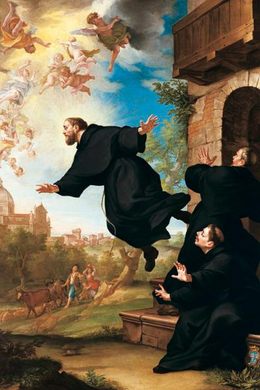





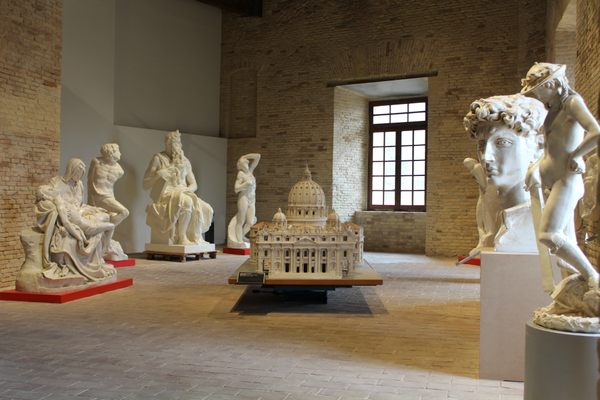
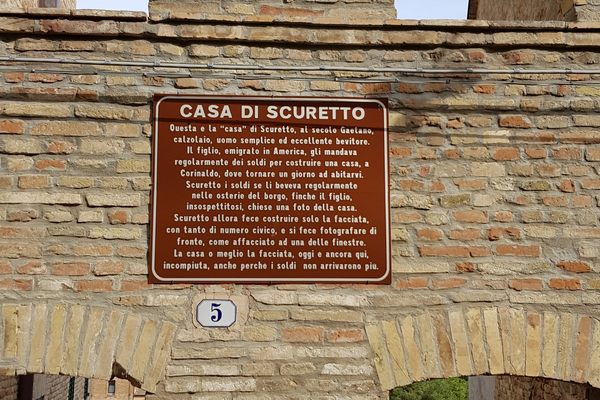


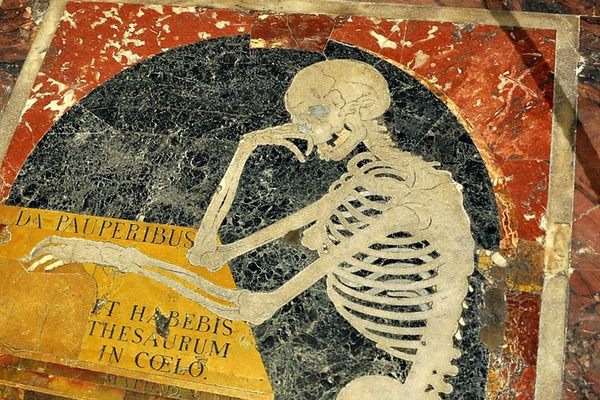
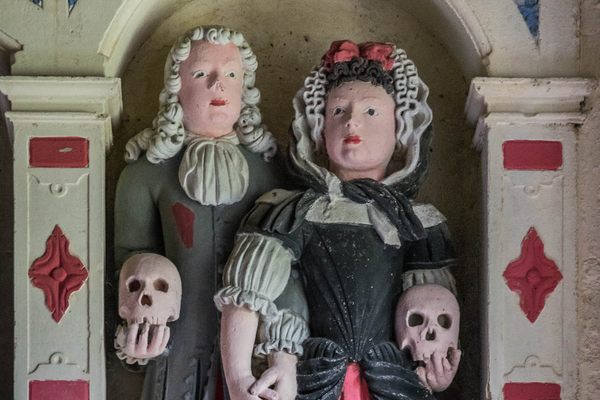


Follow us on Twitter to get the latest on the world's hidden wonders.
Like us on Facebook to get the latest on the world's hidden wonders.
Follow us on Twitter Like us on Facebook